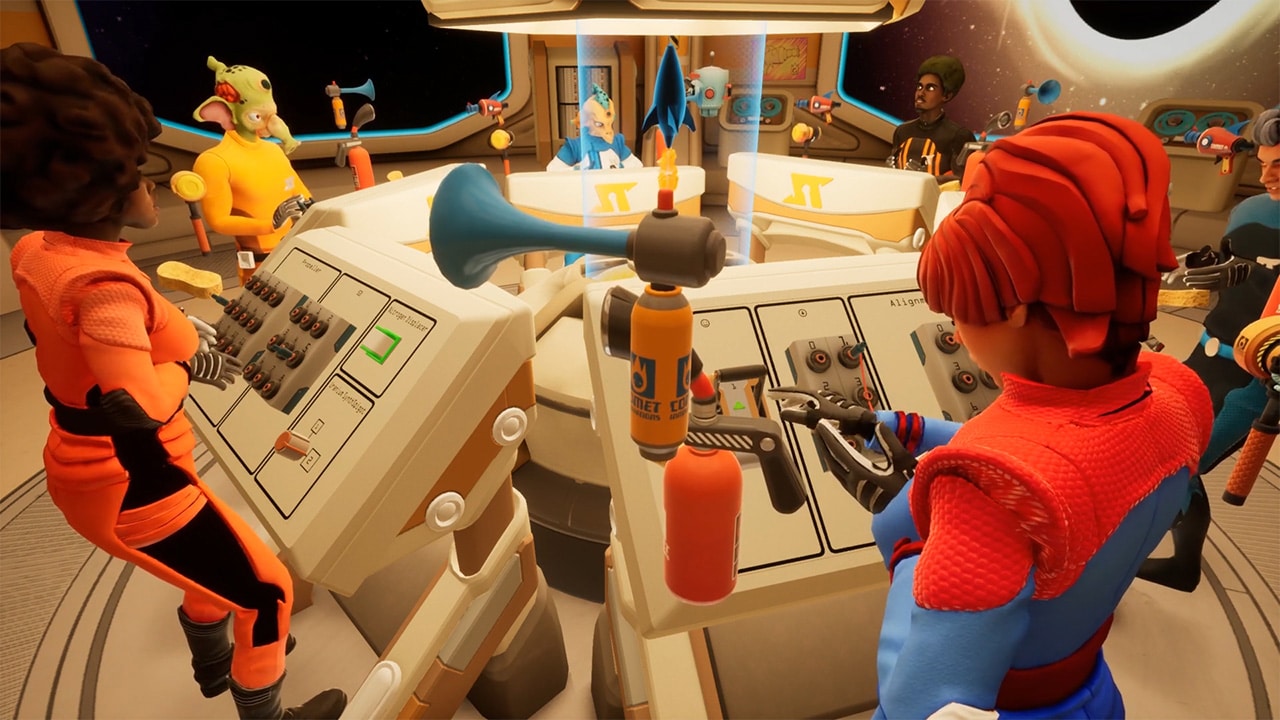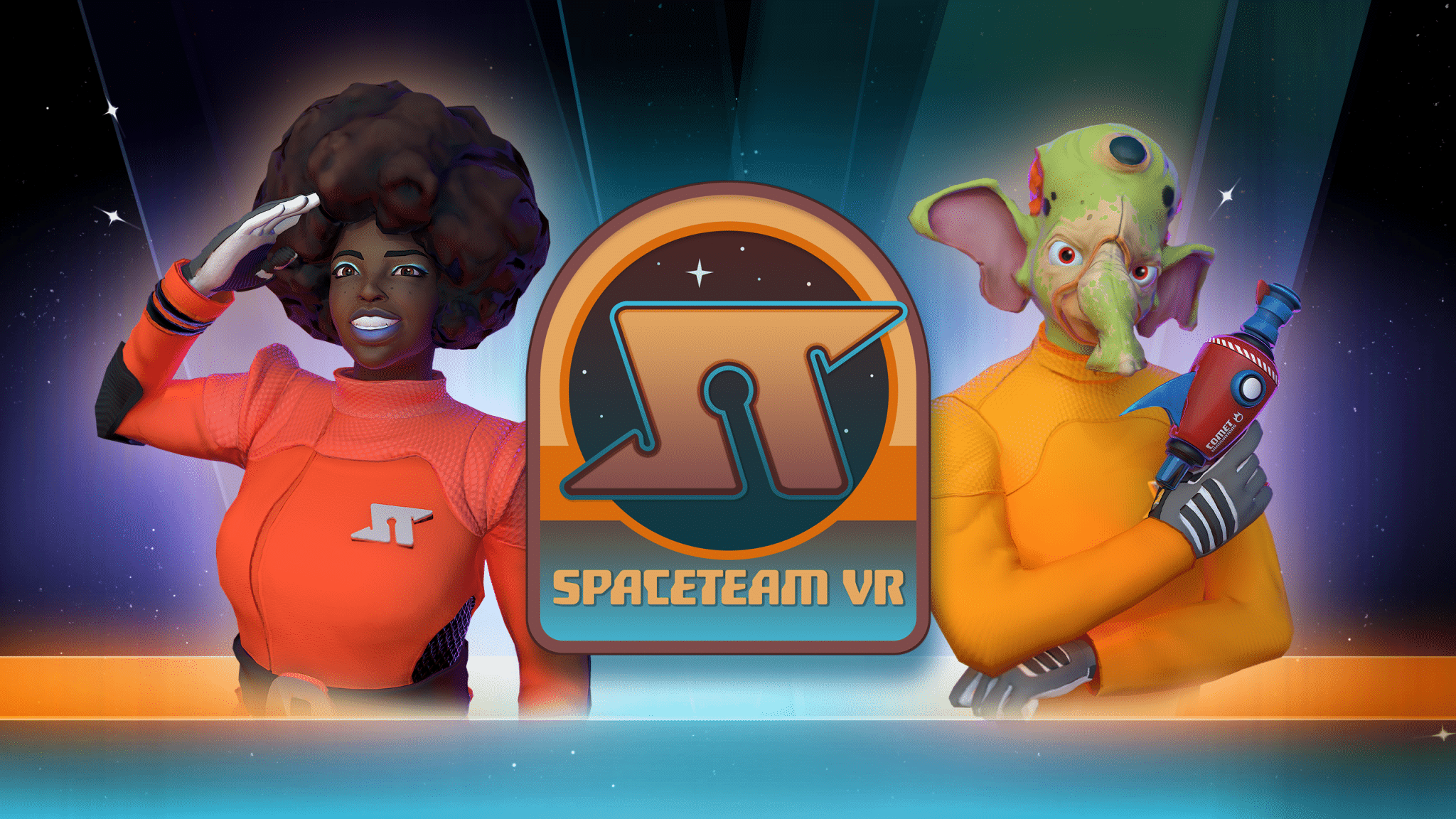There aren’t many more panic inducing activities then being trapped in a chaotic situation with little options to free yourself. If you happen to find yourself trapped on a malfunctioning space station and only have your crew to fly on, as you do in Spaceteam VR, then the situation is even worse.
During PAX East 2020, I got the chance to go hands-on with Spaceteam VR, and what I found was a surprisingly faithful step up from its mobile predecessor.
For those unaware, Spaceteam originated in 2012 as a mobile game, allowing players to participate in a cooperative effort to save themselves and the spaceship they were on. The premise is fairly simple: each player has access to a terminal that receives directions for the other players to do. By working as a team – or shouting at each other, as that often happens instead – the goal is to continue beating levels and keeping your spaceship intact.
In Spaceteam VR, the premise is basically the same, only made much more chaotic thanks to the capabilities that virtual reality allows. Instead of just pressing a touch screen to fix things, you’ll have to actually reach out and interact with the various items at your terminal. Alongside the added three-dimensional twist, being strapped into a VR headset adds a surprisingly difficult component to things. Understanding and reacting to the instructions being yelled to you becomes a bit more difficult when you have to constantly be on a swivel to find exactly what doohickey you’re supposed to press or pull. Combine that with having to shout out other directions while listening for your own, and it provides an extremely frantic but incredibly fun time.

Spaceteam VR features three different difficulties, with the harder difficulties giving players many more controls to be responsible for while amping up just how tough the anomalies that occur are. In easier modes, you might only be responsible for a handful of duties, but tuning things to the hardest difficulty will require you to be on your ‘A’ game. According to Cooperative Innovations, some of the tougher anomalies will include player’s heads shrinking, instructions being presented backwards or with missing letters, and in-game voices on players becoming high pitched and hard to decipher.
Elsewhere in the game, controls are pretty standard for VR titles. You’ll have levers to reach out and grab, buttons to push, and items to grab on the fly as you try to complete your specific instructions. Putting out fires, taking down aliens that try to invade the ship,and having to hammer out mistakes are just some of the many other trials you’ll face while attempting to stay alive. The longer you go, the tougher the challenges you face become, until you eventually find yourself frantically yelling at a teammate to repeat orders as a fire rages on in front of you.
The real draw of a game like Spaceteam VR is in its group play settings a bit like if everything went wrong in Star Trek: Bridge Crew, and Cooperative Innovations seems to have thought of that at every turn. Although the game is primarily meant for virtual reality, players will be able to join in locally on their smartphones or tablets and play along. It’s a great feature that will no doubt come in handy when playing the game, especially because of its six player capabilities. Thankfully for players who don’t have access to a ton of people, Spaceteam VR will also support cross-play between Oculus Quest and other PC VR platforms, in an effort to make the game as accessible as possible to a large base of players.
While Spaceteam VR may not be the most innovative title, but it does offer a ton of replayability and a very fun atmosphere once you dive in. Combine that with the fact that Cooperative Innovations has presented a ton of ways to play, and Spaceteam VR is easily one of the most accessible and fun titles to land on a VR device in some time. There’s no doubt this has the potential to become a big party game in the same vein of Keep Talking and Nobody Explodes, and it wouldn’t be a surprise at all to see it happen.

Spaceteam VR is currently set to launch sometime in April, and will be available on Oculus Quest and PC VR, with a PSVR release planned for sometime this year.


























